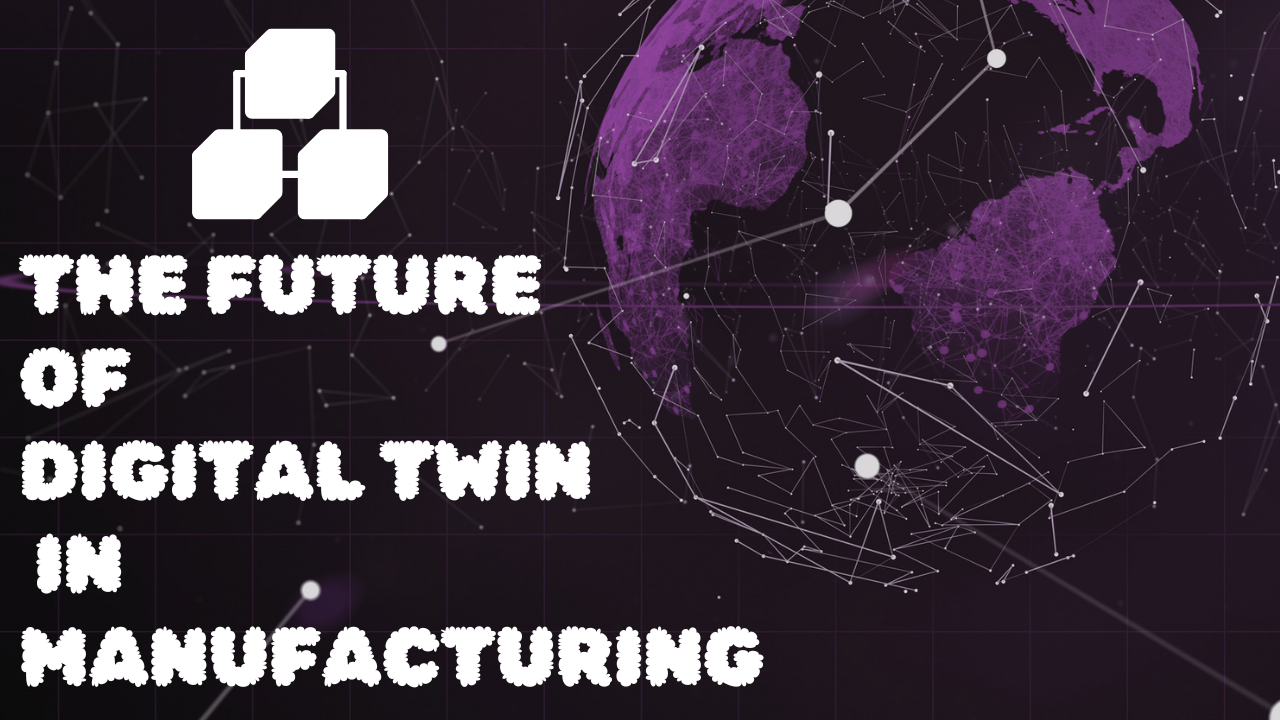In an era marked by rapid technological advancement and increasing global competition, the manufacturing industry is undergoing a profound transformation. Central to this revolution is the concept of the digital twin—a virtual representation of a physical asset, process, or system that utilizes real-time data to enhance decision-making, optimize operations, and innovate products. This article delves into the multifaceted role of digital twins in manufacturing, exploring their benefits, applications, challenges, and the future landscape they are shaping.
Understanding Digital Twins
The term “digital twin” was popularized in the context of the Internet of Things (IoT) but has roots in various industries dating back decades. A digital twin is a dynamic digital replica of a physical object or system that captures its attributes, performance, and behavior through sensors and data analytics. It allows manufacturers to simulate, predict, and analyze the performance of products and processes throughout their lifecycle.
Components of a Digital Twin
Digital twin consists of several key components:
- Physical Entity: The actual object, machine, or system that is being replicated digitally.
- Digital Model: A virtual representation of the physical entity that incorporates data, specifications, and design parameters.
- Data Connection: Real-time data gathered from sensors, IoT devices, and other sources that continuously feed information into the digital model.
- Analytics: Algorithms and analytical tools that interpret the data, providing insights into performance, efficiency, and potential issues.
- User Interface: Dashboards and visualization tools that present insights in an accessible manner for decision-makers.
Benefits of Digital Twin in Manufacturing
Enhanced Operational Efficiency
Digital twins enable manufacturers to visualize their processes in real-time, leading to significant improvements in operational efficiency. By continuously monitoring production lines, Digital Twin can identify bottlenecks, machine performance issues, and workflow inefficiencies. For example, a digital twin of a factory can simulate different production schedules to find the most efficient setup, thus minimizing downtime and maximizing throughput.
Predictive Maintenance
One of the most impactful applications of digital twins is in predictive maintenance. Traditional maintenance schedules often lead to either over-maintenance or unexpected failures. By utilizing real-time data, manufacturers can predict when equipment is likely to fail, allowing them to perform maintenance only when necessary. This not only reduces maintenance costs but also extends the lifespan of machinery. Companies like General Electric have successfully implemented predictive maintenance strategies using digital twins in their aviation division, significantly improving aircraft reliability.
Improved Product Development
Digital twins facilitate rapid prototyping and testing, allowing manufacturers to simulate product performance under various conditions before physical production. This accelerates the product development cycle, reduces costs, and enhances innovation. For instance, automotive manufacturers can use digital twins to test the impact of different designs and materials on vehicle safety and performance, ensuring that products meet regulatory and consumer expectations.
Better Supply Chain Management
The integration of digital twins into supply chain management provides manufacturers with comprehensive visibility into inventory levels, supplier performance, and logistics. By creating a digital twin of the entire supply chain, companies can analyze and optimize each stage, from raw material procurement to product delivery. This holistic approach enables manufacturers to respond swiftly to changes in demand, reducing lead times and enhancing customer satisfaction.
Customization and Personalization
As consumer preferences become increasingly individualized, manufacturers are under pressure to offer customized products. Digital twin enable manufacturers to adapt production processes quickly to accommodate unique customer requirements. By integrating customer feedback into the digital twin, companies can iterate on product designs more rapidly, ensuring that they meet market demands effectively.
Real-World Applications of Digital Twin
Several industries are already reaping the benefits of digital twin technology, demonstrating its versatility and potential:
Aerospace and Defense
In the aerospace industry, companies like Boeing and Airbus use digital twins to improve aircraft design and maintenance. By creating virtual models of aircraft components, manufacturers can simulate flight conditions and assess performance. This approach not only enhances safety and reliability but also reduces the time and cost associated with traditional testing methods.
Automotive
The automotive sector is a pioneer in digital twin applications. Manufacturers such as Ford and Tesla utilize digital twins to simulate vehicle performance, test new features, and analyze data from connected cars. This enables them to refine designs and enhance safety before mass production. Additionally, Tesla uses digital twins for over-the-air software updates, ensuring that vehicles continuously improve even after purchase.
Manufacturing and Industrial Equipment
Companies like Siemens are leveraging digital twins in their manufacturing operations to optimize production workflows. By simulating the entire production process, Siemens can identify inefficiencies and implement improvements. Their digital twin technology also supports predictive maintenance, ensuring that machines operate at peak performance.
Energy Sector
In the energy sector, digital twins play a crucial role in optimizing operations and maintenance for wind turbines and power plants. By monitoring equipment performance in real time, energy companies can predict failures and schedule maintenance, leading to increased efficiency and reduced downtime. For example, Siemens Gamesa uses digital twins to monitor wind farm performance, optimizing energy output and operational costs.
Healthcare
In healthcare, digital twins are emerging as a powerful tool for patient monitoring and personalized medicine. By creating digital replicas of patients based on their medical history, lifestyle, and genetic information, healthcare providers can simulate treatment outcomes and tailor interventions accordingly. This approach enhances patient care and improves the efficiency of healthcare systems.
Challenges and Considerations
Despite the significant advantages of digital twin, their implementation is not without challenges:
Data Integration
Digital twins rely heavily on data from various sources, including sensors, machines, and software systems. Ensuring seamless data integration and interoperability can be complex, especially in legacy systems. Manufacturers must invest in robust data infrastructure and standards to facilitate effective integration.
Investment Costs
The development and maintenance of digital twins require substantial investment in technology and skilled personnel. Manufacturers need to carefully assess the costs and potential return on investment to ensure that digital twin initiatives are financially viable.
Cybersecurity Risks
As digital twins are connected to the internet and rely on real-time data, they are susceptible to cybersecurity threats. Manufacturers must prioritize cybersecurity measures to protect sensitive data and ensure the integrity of their operations. This includes implementing robust security protocols, conducting regular audits, and training employees on best practices.
Change Management
Implementing digital twins often requires a cultural shift within organizations. Employees must be trained to understand and utilize the technology effectively. Change management strategies are essential to address resistance and ensure that all stakeholders are engaged in the transformation process.
The Future of Digital Twin in Manufacturing
As the manufacturing landscape continues to evolve, the potential applications of digital twins will expand. Key trends shaping the future of digital twins in manufacturing include:
Integration with Artificial Intelligence
The integration of artificial intelligence (AI) and machine learning with digital twin will enhance their capabilities significantly. AI algorithms can analyze vast amounts of data, enabling more accurate predictions and insights. This combination will allow manufacturers to optimize operations further, enhance decision-making, and drive innovation.
Increased Adoption of IoT Devices
The proliferation of IoT devices will further accelerate the use of digital twins in manufacturing. As more machines and equipment become connected, manufacturers will have access to real-time data that can be used to create more accurate and dynamic digital twins. This will enhance monitoring, control, and optimization across manufacturing processes.
Sustainability Initiatives
As sustainability becomes a central focus for manufacturers, digital twin plays a vital role in optimizing resource usage and minimizing waste. By simulating production processes and assessing their environmental impact, manufacturers can identify opportunities for improvement and align with sustainability goals.
Collaborative Digital Twins
The future of digital twins may also involve collaborative models that allow multiple stakeholders—suppliers, manufacturers, and customers—to access and contribute to the digital twin. This collaborative approach can enhance transparency, improve communication, and foster innovation across the value chain.
Conclusion
Digital twins are undeniably transforming the manufacturing landscape, providing valuable insights that drive efficiency, innovation, and customization. As the technology continues to evolve and become more accessible, manufacturers that embrace digital twins will be better positioned to navigate the complexities of the modern market. By optimizing operations, enhancing product development, and improving supply chain management, digital twins are not just a trend—they are a fundamental shift in how manufacturing is approached.
As industries look toward a future characterized by greater connectivity and data-driven decision-making, the integration of digital twins will play a crucial role in shaping the next generation of manufacturing processes. The journey toward digital transformation is ongoing, and those who harness the power of digital twins will lead the way in redefining what is possible in manufacturing.
FAQs
What is a digital twin?
A digital twin is a virtual representation of a physical object, process, or system, created using real-time data. It allows manufacturers to simulate, analyze, and optimize performance throughout the lifecycle of the asset.
How does digital twin improve operational efficiency?
Digital twin enables real-time monitoring of production processes, helping to identify bottlenecks and inefficiencies. By simulating different scenarios, manufacturers can optimize workflows and reduce downtime.
What role do digital twins play in predictive maintenance?
Digital Twin uses real-time data to predict when equipment is likely to fail. This proactive maintenance approach minimizes unplanned downtime and reduces maintenance costs by addressing issues before they escalate.
How do digital twins enhance product development?
Digital twins facilitate rapid prototyping by allowing manufacturers to simulate product performance under various conditions. This accelerates the design process, reduces costs, and improves product quality.
What industries are using digital twins?
Digital twins are used across various industries, including aerospace, automotive, healthcare, energy, and manufacturing. Companies like Boeing, Tesla, and Siemens are leading examples.

